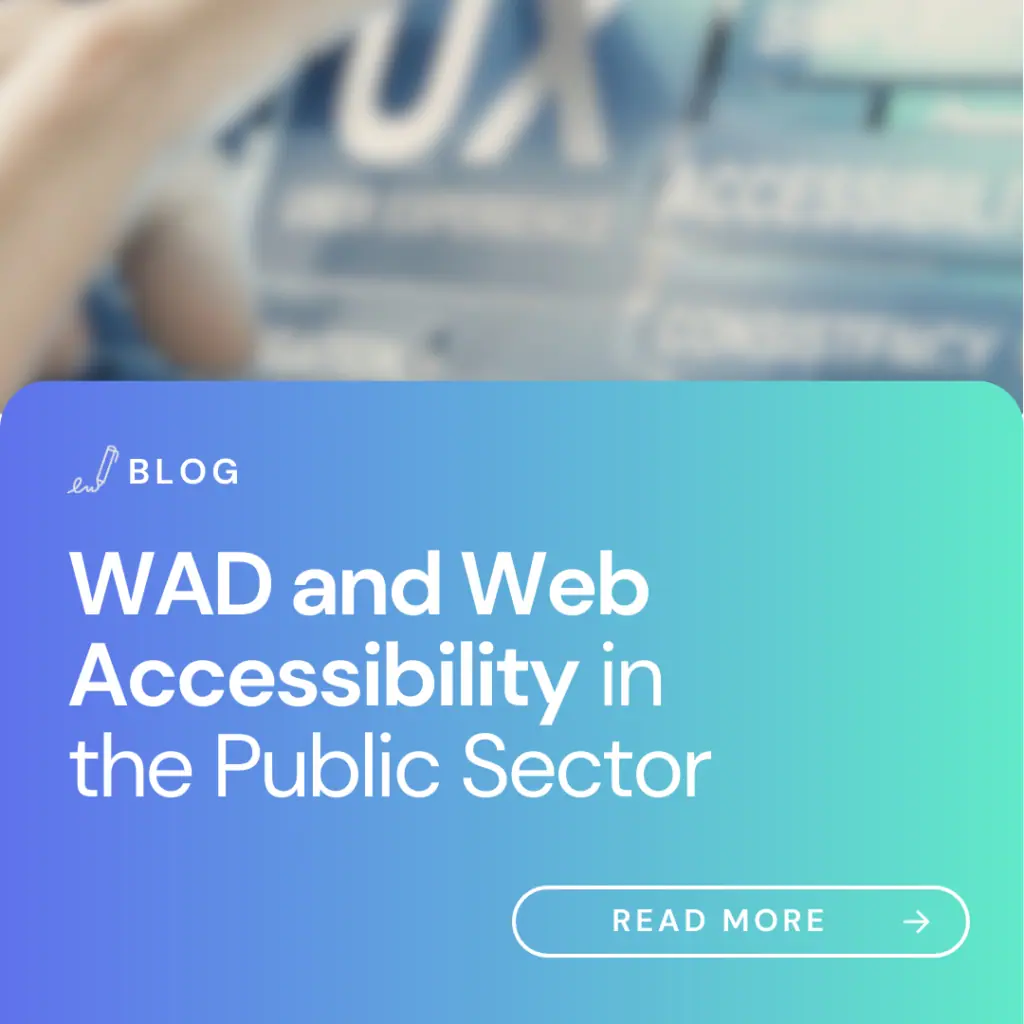

Have you ever tried to read a website on your phone and couldn’t zoom in? Or tried to watch a video without sound… and there were no subtitles? For many people, this isn’t just an occasional annoyance — it’s a daily obstacle. We’re talking about digital accessibility: making sure that everyone, regardless of their abilities, can use the internet without barriers.
WAD stands for Website Accessibility Directive. It’s a European regulation introduced through Directive (EU) 2016/2102, approved by the European Parliament and the Council of the European Union.
But what’s the goal? To ensure that public sector websites and mobile applications are accessible to everyone, including people with disabilities.
This directive is behind many of the changes you’ve probably already noticed on your local council’s website, your university’s platform, or a government ministry site.
In Spain alone, there are over 4.3 million people with some form of disability. And if we add the elderly population — who may also face difficulties navigating the internet (blurred vision, shaky hands, trouble understanding menus…), the number of people who benefit from accessible websites is huge.
Accessibility is a real necessity in a digital society. The internet is the gateway to public services, education, work, entertainment… leaving part of the population out is not only unfair , it’s inefficient.

The WAD applies to all public sector bodies across the European Union. This includes:
In short: if a website or app is linked to the public administration, it must comply with the WAD.
The WAD was rolled out in phases:
So yes, it is now fully in effect, and any public organisation that fails to comply may face complaints, inspections or even fines.
It means that anyone, whether they have a visual, auditory, motor or cognitive disability (or are simply older or using a slow connection),can navigate the site, understand its content and use it without barriers.
Some examples of what web accessibility involves:
To comply with the WAD, websites must meet an international accessibility standard called WCAG (Web Content Accessibility Guidelines), specifically version 2.1 at AA level.
These guidelines, developed by the W3C (the main international body for web standards), outline a set of technical and design requirements to ensure a website is accessible.
Some of the rules include:
In Spain, the Observatorio de Accesibilidad Web (part of the Ministry for Economic Affairs and Digital Transformation), regularly reviews public sector websites.
In addition, the WAD requires that:
If a public sector website doesn’t meet the WAD requirements, anyone can file a complaint. The public administration must respond and, if necessary, correct the issue.
Failure to comply may result in reputational damage, loss of public trust, and even fines if there’s a clear breach of the right to access public services.
While the WAD doesn’t apply to private companies, another EU regulation: the EAA (European Accessibility Act) does. Coming into force in 2025, this law will affect many private sector businesses, especially those offering digital services to the public (banks, ecommerce platforms, streaming sites…).
Ensuring digital accessibility isn’t just a legal obligation for public administrations: it’s a sign of respect for millions of people who would otherwise be excluded from the digital world. The WAD is a reminder that web design must be inclusive, made for everyone, with no exceptions.
And if you don’t know where to start, tools like Lawwwing can help you automatically assess your website, identify areas for improvement, and generate the necessary legal documentation to ensure compliance. Building a more accessible site becomes much easier when you have the right technology and guidance on your side.
Plus, accessibility enhances the overall user experience, improves SEO, reduces bounce rates, and strengthens the image of any organisation as modern and responsible.